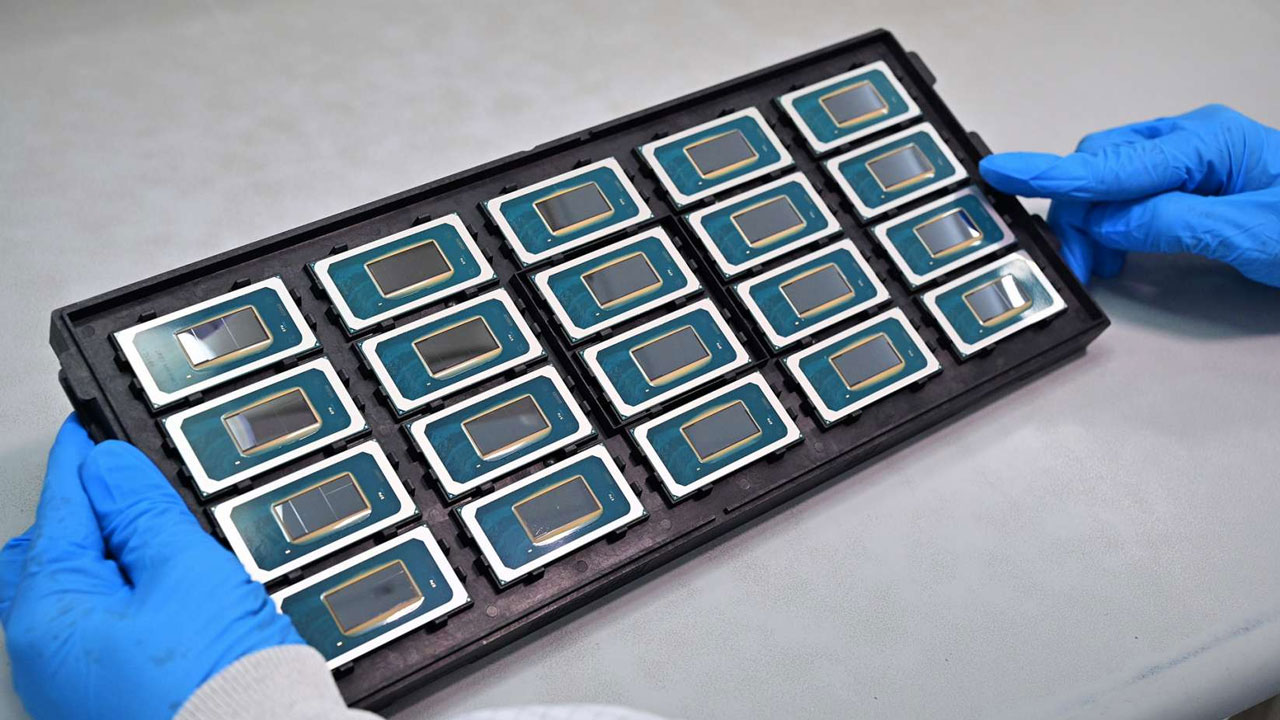Intel's Lunar Lake reference laptops aim to improve power efficiency with Cirrus Logic hardware
Better audio and efficiency.

Audio semiconductor specialist Cirrus Logic has announced that its audio and power converter chips will be used for reference laptops based on Intel's upcoming Lunar Lake CPUs (via Business Wire). The cutting-edge power converter chip promises to reduce power and heat with the aim of increase battery life, as well as reducing fan noise, enabling laptops to get even thinner. Though exact details on Lunar Lake itself are scant, it's becoming clear that Intel is doing what it can to assure its next-generation mobile CPUs as efficient as possible.
The audio and power converter chips in question are Cirrus's CP9314 for power conversion, the CS42L43 codec chip, and the CS35L56 audio amplifier. The codec and amplifier chips don't seem to particularly new, as the former seems to have been available as early as 2016 and the latter as early as 2021. The CP9314 appears to be the most recent of the three, especially as details about it are almost nonexistent, and it's not even on Cirrus's own website yet.
Even in its press release, Cirrus was tight-lipped about the power conversion chip, which is apparently the component that enables Lunar Lake's reference laptop to feature what is supposedly record-breaking efficiency and thinness. Instead, Cirrus focused far more on its audio solution, which the company claims has better security, supports spatial audio alongside other "next-generation features," and will be easy for OEMs to implement in their own laptops.
Though this announcement hasn't exactly revealed much about Lunar Lake, it's becoming more clear what Intel's priorities are with its next-generation mobile CPUs. Power efficiency appears to be a key priority, which aligns with previous rumors suggesting that the full chip only has four P-cores and four E-cores and total, and may even support a TDP as low as eight watts. Allegedly leaked slides detailing Lunar Lake suggest that it consumes 40% less power than Meteor Lake, more than the 30% reduction Intel reckons for Meteor Lake U.
Perhaps the most interesting rumor about Lunar Lake is its use of TSMC's 3nm node, instead of Intel's 18A process, which was previously thought to be the most likely candidate. That might imply 3nm has better power efficiency than 18A, and even if Intel would rather not use its rival's process, it may be necessary if Intel ever wants to catch up to Apple's M-series chips, which are efficiency champions.
Lunar Lake is due to arrive this year, with a launch following Arrow Lake, which implies it will probably arrive in the second half. The design of the CPU itself will have to do most of the heavy lifting when it comes to things like performance and efficiency. But the inclusion of cutting-edge chips from Cirrus might give Lunar Lake the edge it needs to bring Intel back to the forefront of portable computing efficiency.
Get Tom's Hardware's best news and in-depth reviews, straight to your inbox.

Matthew Connatser is a freelancing writer for Tom's Hardware US. He writes articles about CPUs, GPUs, SSDs, and computers in general.
-
Order 66 Reply
I'm sorry, but I would love to know what you are referring to. I haven't been in the technology space long (5 years) and would love to know what you're talking about.TerryLaze said:Confused it with Cyrix for a bit and almost got a heart attack. -
kwohlt ReplyPerhaps the most interesting rumor about Lunar Lake is its use of TSMC's 3nm node, instead of Intel's 18A process, which was previously thought to be the most likely candidate.
18A isn't debuting in any products until the second half of 2025. So LNL, which is a 2024 H2 product, was never expected to be on 18A -
TerryLaze Reply
Cyrix is a company that made CPUs waaay back in the day, they have been out of business since the 90ies I think.Order 66 said:I'm sorry, but I would love to know what you are referring to. I haven't been in the technology space long (5 years) and would love to know what you're talking about. -
bit_user Reply
We had a Cyrix FasMath x387-compatible math coprocessor, in the family PC. My dad installed it to accelerate CAD. It was supposedly faster than an Intel 80387.TerryLaze said:Cyrix is a company that made CPUs waaay back in the day, they have been out of business since the 90ies I think.
Interestingly, AMD bought the last true shred of Cyrix, back in 2006, in the form of the Geode SoC product line. I wonder how much engineering talent or IP (if any) would live on to form part of Zen. Or, maybe at least the Bobcat/Jaguar/Puma low-power cores that ended up in PS4 and XBox One? It would make some sense for those to have come out of the Geode team, I suppose.
https://en.wikipedia.org/wiki/Geode_(processor) -
bit_user Reply
From Wikipedia:Order 66 said:I haven't been in the technology space long (5 years) and would love to know what you're talking about.
"In the early 1990s, Cirrus Logic became a supplier of PC graphics chips ..."
I think this is where a lot of us know them from. According to the same wikipedia page, they left that market in 1998. It outlines their graphics products in more depth, if you're curious. Or, you can find an in-depth look at their graphics swan song, the Laguna3D, here:
https://vintage3d.org/cirrus.php